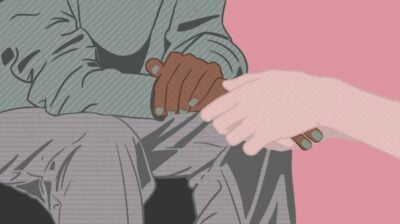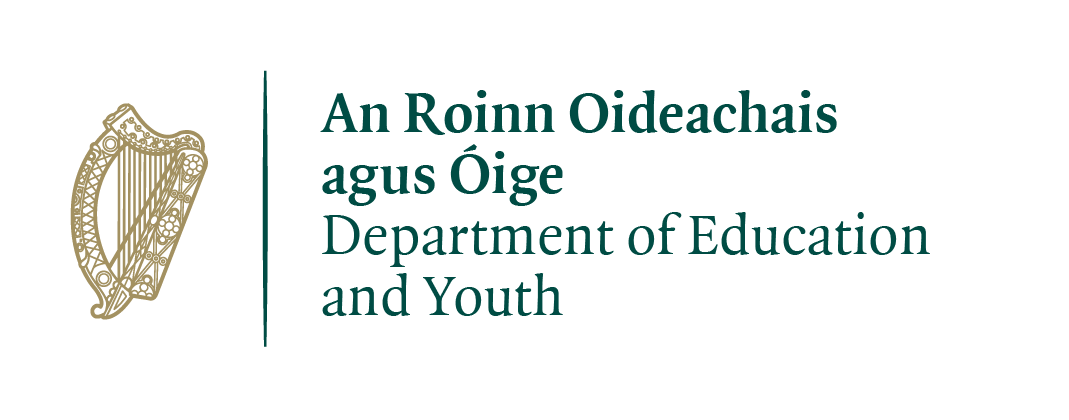How to recognise internalised racism
Learn about the signs of internalised racism, its relationship to other forms of structural racism, and where to go to access support.

Internalised racism, sometimes called internalised oppression in a broader context, happens when people from marginalised racial or ethnic groups come to accept racist beliefs, attitudes, and behaviours about their own and other’s groups. These racist ideas are typically upheld by certain members of the dominant or majority racial or ethnic group. In some cases, this means believing racist stereotypes and beliefs about your own identity, which can lead to self-rejection.
The majority or dominant racial group is the racial group in a particular country or area that has historically benefitted from and continues to benefit from the unequal distribution of power and resources. Racial groups that dominate other racial groups are not always the largest in numbers but hold more power in the form of cultural influence, control over institutions, and other advantages.
Internalised racism doesn’t just affect individuals—it can also impact entire communities. A person experiencing internalised racism may not only apply these harmful beliefs to themselves but also others in their racial or ethnic group.
Research shows that internalised racism can have serious negative effects on both mental and physical health.
What is race?
Throughout this article, the word “race” or “racial identity” is used numerous times. It is important to remember that race does not refer to a biological characteristic or set of characteristics. Instead, race is generally understood as a social construct that is used to identify certain people. Identifying someone as belonging to a certain race or racial identity can influence how that person is treated within society.
While this article focuses on race, internalised racism often works alongside other factors like class, gender, and migration status. This means that the impact can be felt in many different ways outside the scope of this brief explainer.
Read more on racism.
What’s the difference between racism and internalised racism?
Internalised racism is part of a larger system of racism, which includes institutional, structural, and interpersonal racism.
- Interpersonal racism refers to discrimination, bias, and prejudice from members of a dominant racial group toward a minoritised racial group
- Institutional racism involves policies, practices, and cultures within institutions or systems that create or reinforce racial inequalities—whether intentionally or not. This often results in majority or dominant groups having more access to resources and power than minority groups. Examples include discrimination against racial minorities in employment and racial profiling of minorities by the police.
- Structural racism is the broader, ongoing impact of racism woven into society’s history and institutions, shaping opportunities and inequalities across generations. Examples include inequalities in healthcare, leading to poorer health outcomes for racial minorities, and inequalities in wealth.
Why it’s important to look at the wider context
Understanding the broader societal context in which internalised racism happens is key to recognising and challenging it. Internalised racism doesn’t just happen by accident but is actively maintained by institutions and media, as well as other social structures.
Without awareness of interpersonal, structural, and institutional racism, a person exposed to negative attitudes about their own racial identity may internalise these attitudes. They might begin to believe that there is something “wrong” or “bad” about them. Having some knowledge of the history of structural racism can help you to separate harmful beliefs about race from your identity or value as a human being. It shows that the issue is not with you but with the failure of institutions and cultures to be inclusive and equal.
Internalised racism can be just as harmful as interpersonal racism. Some scholars and experts believe it is one of the main ways that the other external types of racism—interpersonal, institutional, and structural—affect your overall health.
Learn more about racism, including historical, structural, institutional, and individual racism.
Have I always lived with internalised racism?
No one is born with internalised racism. Internalised racism requires repeated exposure to an environment that promotes negative beliefs and attitudes about your racial or ethnic group. Over time and with frequent exposure, you may begin to incorporate some of these stereotypes and negative beliefs into how you view yourself.
This process can happen gradually, and you may not even notice it happening. Internalised racism can lead some people to accept negative stereotypes as defining or important parts of their identity. This, in turn, can result in people putting themselves down or treating themselves poorly. You might treat yourself poorly by thinking or saying highly critical, unkind things about yourself. You might change aspects of your physical appearance. This can happen in small ways like straightening your hair or in more potentially dangerous ways like lightening your skin.
Not all changes you make to your appearance, including hair straightening, are necessarily signs of internalised racism, however. The underlying motivation for this physical change can help you tell if internalised beliefs might be at play. Wanting to look less like the racial identity group you’ve been assigned to, for example, can be a good indicator.
Learn more about what to do with these harmful stereotypes and beliefs in this article on challenging internalised racism.
What is the difference between internalised racism and low self-esteem?
Internalised racism and low self-esteem are related but not the same. Research shows an inverse relationship between internalised racism and self-esteem, meaning that the more someone experiences internalised racism, the more likely they are to have lower self-esteem. Believing that the racial group you belong to or are identified as belonging to is lesser than the dominant group plays a big role in feeling low about yourself.
One way of distinguishing between internalised racism and low self-esteem is by checking whether your thoughts or beliefs about yourself reflect negative representations of your racial identity group by certain members of the dominant or majority racial identity group. The belief that you are less capable or attractive than individuals from a majority or dominant racial identity group is one example of internalised racism.
In contrast, low self-esteem tends to involve feeling bad about yourself generally, without the belief that it is your racial identity that makes you less capable, attractive or worthy as a human being. You may struggle with feelings of inferiority due to past setbacks or difficult relationships. However, your negative self-judgments are not specifically tied to race.
How do I know if I’m experiencing internalised racism?
Understanding internalised racism can be challenging, but it can show up in everyday life in different ways. Here are some signs that you might be experiencing this type of racism:
Rejection of cultural or religious practices
You might reject or feel ashamed of the values, traditions, or beliefs that are part of your ethnic or cultural heritage. It’s important to be aware that while this can be a sign of internalised racism, this is not always the case. People may distance themselves from cultural or religious practices for many different reasons, something that’s especially common among second- and third-culture children and young people.
Acceptance of negative stereotypes
You may internalise harmful stereotypes about your racial group. Harmful racial stereotypes tend to focus on ideas of your racial group being “less than” in areas like intelligence, physical ability, attractiveness, body image, sexuality, or gender expression.
Adopting traits of the majority/dominant racial group to fit in
You might feel like you need to change your natural characteristics, such as your mannerisms, accent, or physical appearance, to fit in with the majority or dominant racial group’s expectations.
Identifying internalised racism can be challenging. The process of accepting negative beliefs and stereotypes can happen gradually without your noticing. This type of racism can sound like devaluing your cultural heritage or wishing to alter your physical appearance. It might also sound like rehearsing negative stereotypes.
Reaching out for support
Fully understanding whether you experience internalised racism often requires deep reflection on your beliefs and behaviours. This includes beliefs towards your own racial identity and that of others. This self-examination can be a difficult process, but seeking support can help.
Finding an inclusive therapist from services such as Black Therapists Ireland or the Traveller Counselling Service can support you in this journey. An inclusive therapist can guide you through the process of challenging your internalised racism. This can take time and may be difficult but can be a crucial step towards healing.
Read more on inclusive therapy and how to access counselling psychotherapy in Ireland. Find more services that cater specifically to ethnic and racial minorities in our article on mental health support for ethnic minorities in Ireland.
For information on what to do next, visit our article on challenging your internalised racism.
Feeling overwhelmed and want to talk to someone?
- Get anonymous support 24/7 with our text message support service
- Connect with a trained volunteer who will listen to you, and help you to move forward feeling better
- Whatsapp us now or free-text SPUNOUT to 50808 to begin.
- Find out more about our text message support service
If you are a customer of the 48 or An Post network or cannot get through using the ‘50808’ short code please text HELLO to 086 1800 280 (standard message rates may apply). Some smaller networks do not support short codes like ‘50808’.






